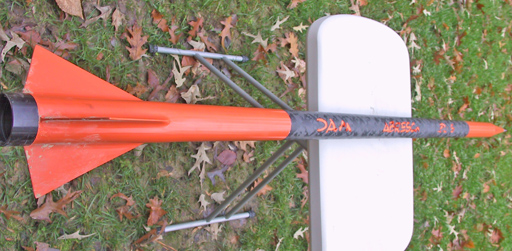![]()
The best flying day of Red Glare 7 was naturally the last day. The sky was clear but the winds were still breezing at 10 – 12 knots. Should we send the Damn Abresch Boys up in this breeze and risk never seeing it again? We took a vote, Ben; Yes!; JP; Yes, Why did we build it then?, Joseph; Huh? Was that a butterfly?, Peter; Hmmmmmm, Ok, it might be awhile before we get another chance. With the GO decision behind us we started the somewhat complex preparations that go into a minimum diameter extreme rocket.
The ejection charges were attached and tested for continuity. The shock cord was attached to the motor casing, the Parrot altimeter was fired up, the drogue parachute and shock cord were carefully packed as well as the main parachute and shock cord, and finally the nose cone was shear pinned on. A Quickburst igniter was prepared on a small dowel and a flight card completed. The rocket was inspected by the RSO. The Damn Abresch Boys weighed in at 10 pounds with the motor installed. With over 400 pounds of thrust available on the Loki L1400 motor, the Damn Abresch Boys would not sit on the pad for long.
The Damn Abresch Boys was quickly mounted on the pad, the igniter installed, and the ejection charges armed. The launch rail was angled about 5 degrees into the wind using the Optimal Rocket Trajectory Alignment Process. The electrical leads were hooked to the igniter. We licked the carbon fiber (don’t ask) for good luck and asked the LCO for priority. We were concerned that the small onboard Parrot altimeter battery was draining away. The LCO obliged, started the countdown, and pushed the button. Wow! Listen to the snap, crackle and pop while watching the flight here.
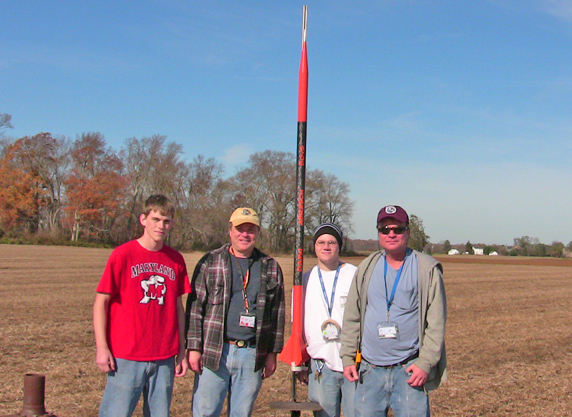
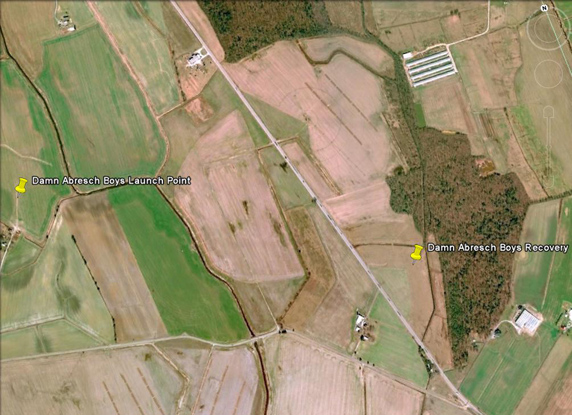
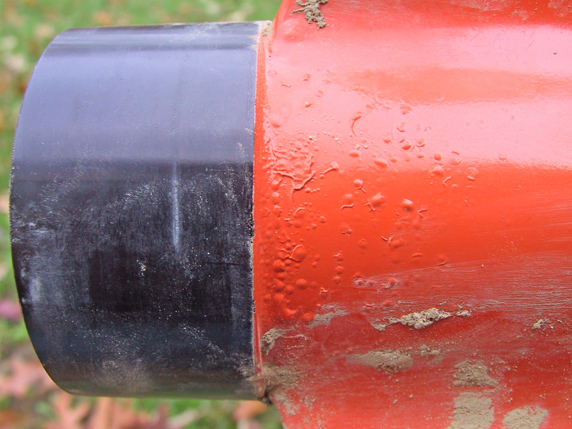
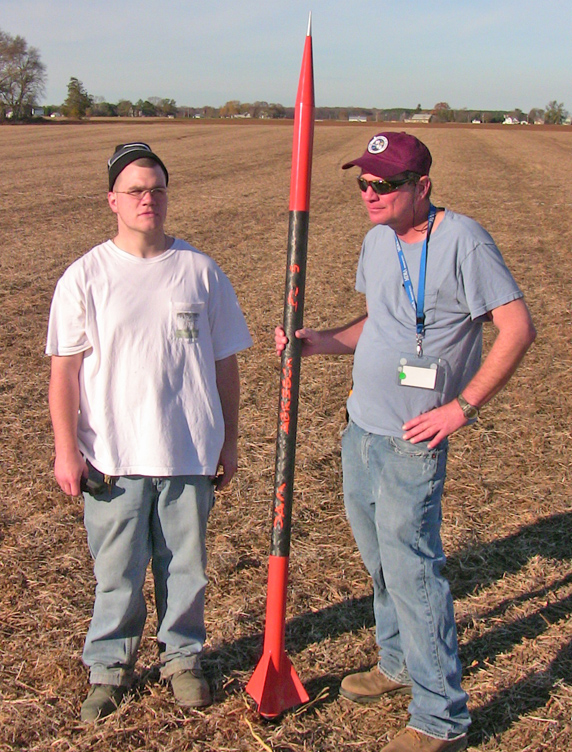
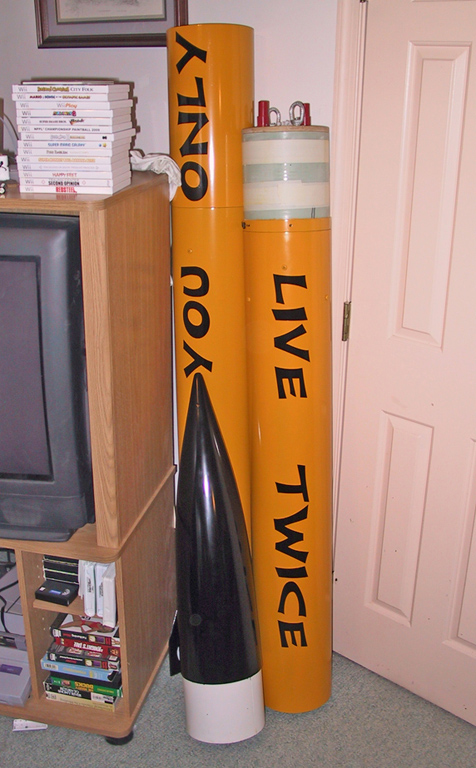
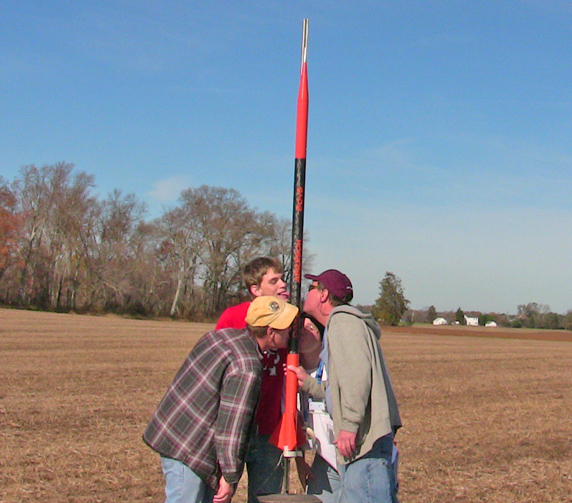
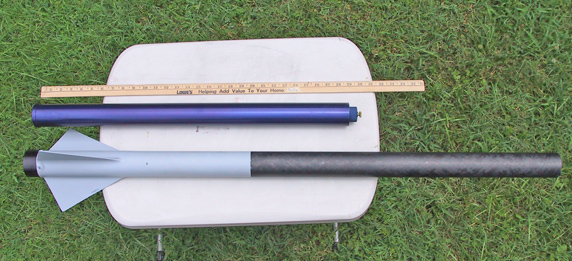
Did anyone see where it landed? Ben; No!, JP; No! Joseph; Huh, was that a butterfly?, Peter; No!. Not to worry, the Damn Abresch Boys had radio tracking and we had a strong signal. Ben, JP, and I followed the signal for about ¾ mile and found a fellow rocketeer’s rocket. Errrr! The rocket was using the same frequency as us. The rocket’s transmitter was disabled and we got the faint beep of the Damn Abresch Boys. We followed the beep through the mud, over a creek, through a briar patch, around a soy bean field, around a spinach patch, around a corn field, across the road, through a hay field, and then there it was. The Damn Abresch Boys had come to rest mere yards from a tree line. The rocket had travel vertically 3.1 miles and landed 1 mile from its launch point.
The rocket was inspected for damage. The decals had melted and some paint bubbled around the slimline engine retainer obtrusion from the extreme speeds. Otherwise the Damn Abresch Boys was ready to fly again. We called Joseph to pick us up and were soon having the judges download our data. Once we heard the results, the Damn Abresch Boys puffed out our chests and strutted down the flight line. We had won the Mach Madness contest, had a successful extreme rocket flight, even by MDRA standards, and lived to fly another day.
Many spectators visited our flight camp to ogle such an extreme rocket and to congratulate us. With each passing compliment, our egos grew until we approached Loki Research and inquired about the possibility of a blue propellant formula which should push the Damn Abresch Boys even faster, earlier, and still stay within the 17,000 foot waiver. Loki will try to have such a propellant ready by spring.
After analyzing the recordings from the electronics, here is how the flight unfolded. It took about 1/2 second for the 2,800ns engine to come up to full pressure and then the Damn Abresch Boys bolted off the pad, pulling 50 Gees. Less then a half second later and at an altitude of 398 feet, the Damn Abresch Boys already went transonic. Less than a second later and at an altitude of 1,003 feet, the Damn Abresch Boys accelerated through transonic into supersonic speeds. Engine burnout occurred 2 seconds from liftoff at an altitude of 3,463 feet. Engine burnout was the fastest point in which the Damn Abresch Boys achieved 2050 feet per second, 1,398 miles per hour, or Mach 1.86, whatever floats your boat.
The Damn Abresch Boys continued its ascent for another 26 seconds before finally arcing over at 16,301 feet, where the air temperature was a balmy 80 degrees. The apogee ejection occurred on time and the Damn Abresch Boys descended under drogue for 2 minutes and 45 seconds until at 600 feet, the main parachute was successfully deployed. The entire flight lasted 3 minutes and 34 seconds. Of course all this information came from the recorded data. In reality, the rocket disappeared from sight about two seconds from liftoff.
We reflected back on the Mach Factor 2 project. Ben; Man! What an awesome flight! I am going to brag to my aeronautical engineering professor, JP; I told you this would work, it was all my idea. Joseph; Huh, was that a butterfly?, Peter; Hmmmmmm.
